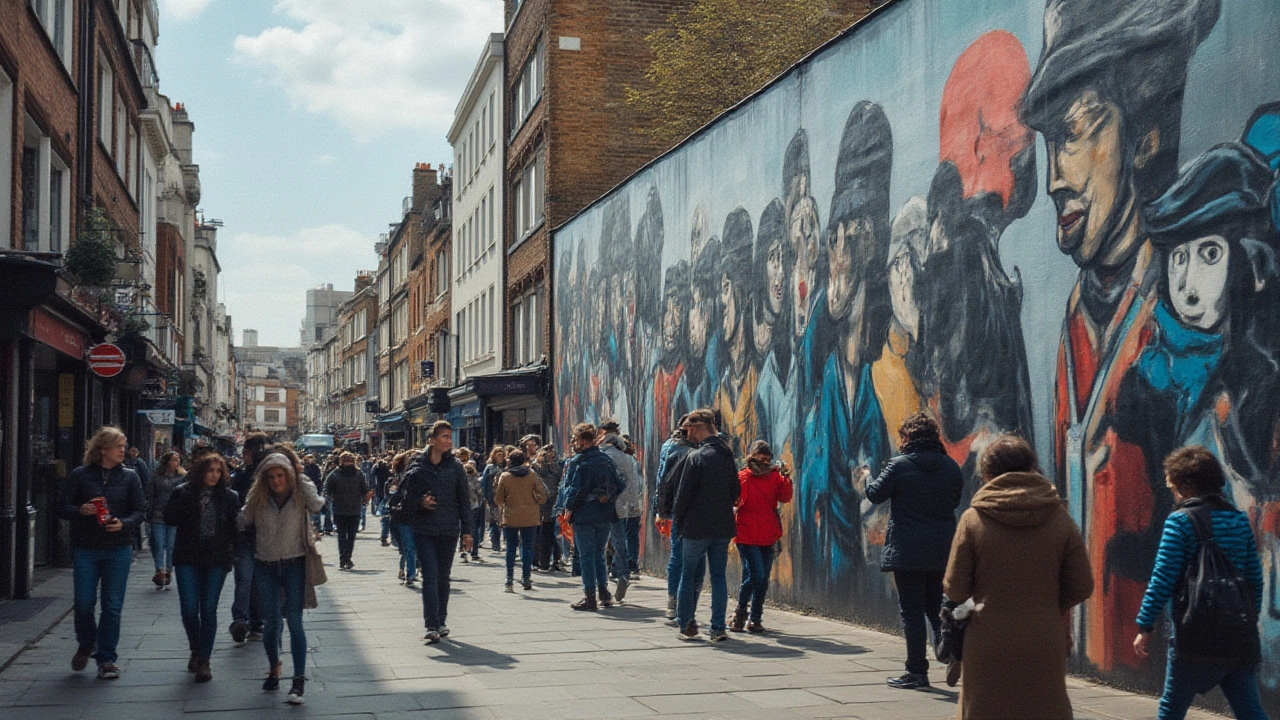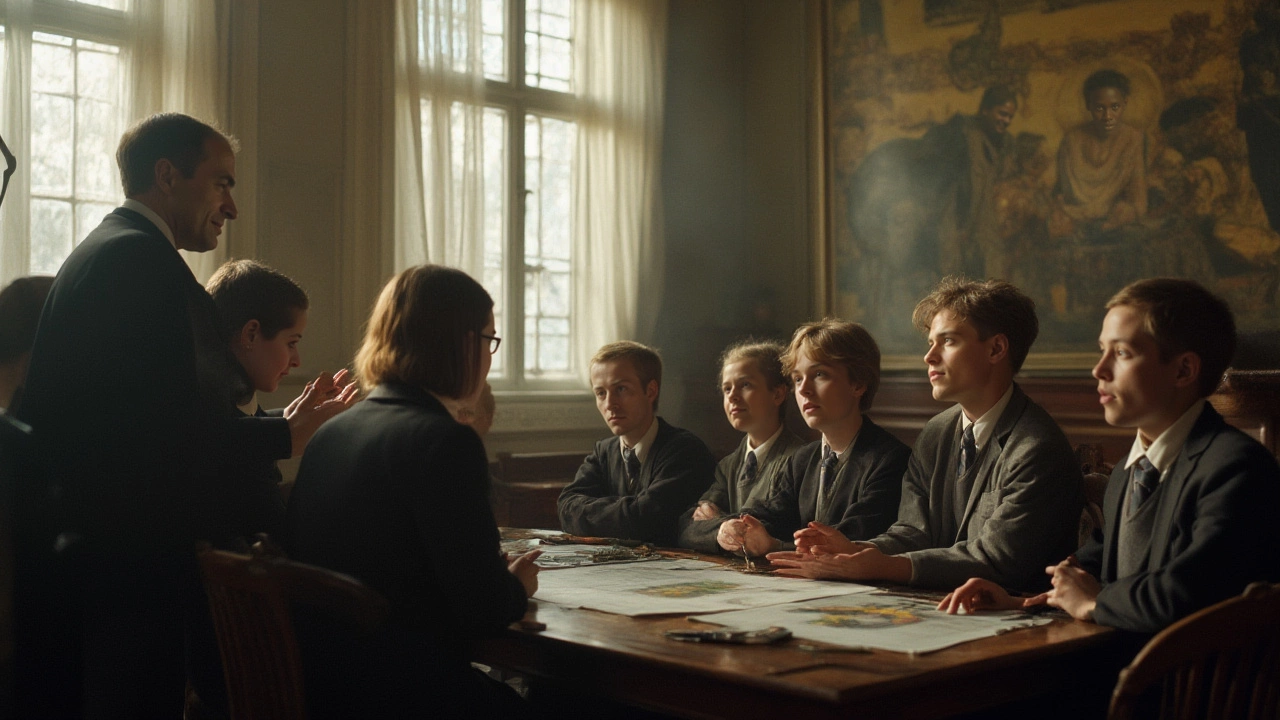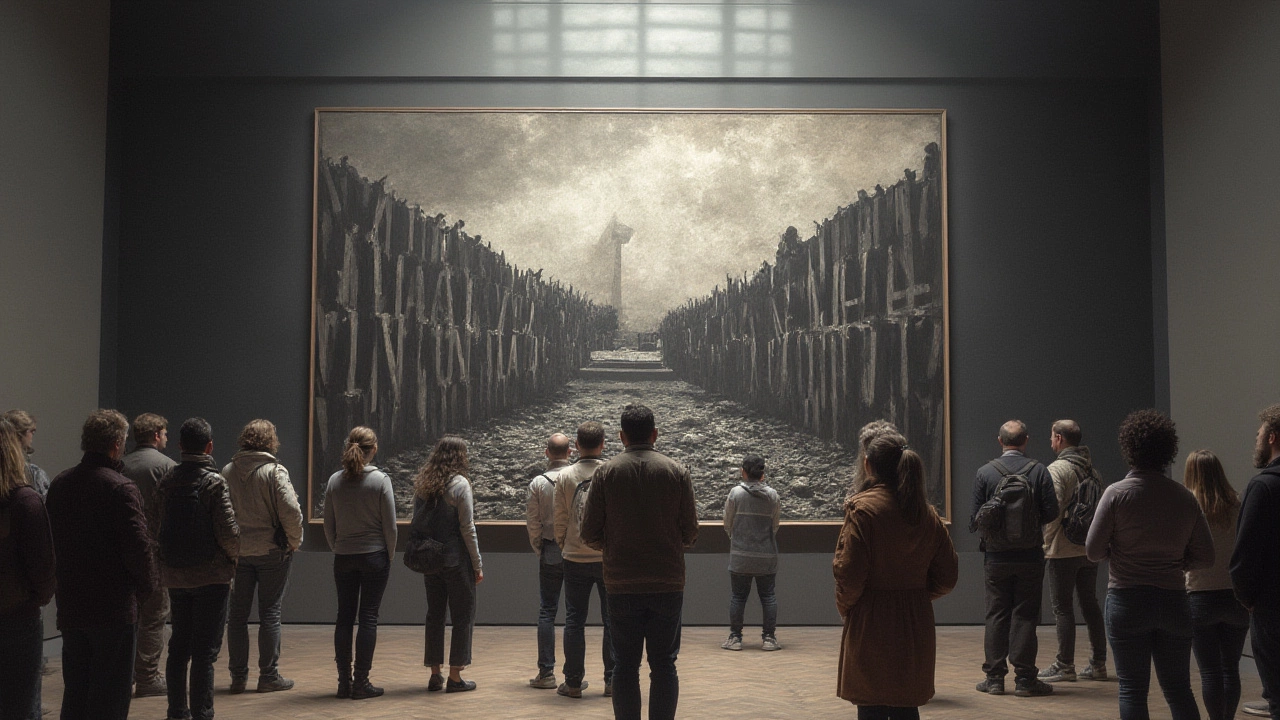Ask people to name a painting by Picasso, and nine times out of ten the answer you’ll hear is “Guernica.” It’s that haunting, massive black-and-white mural full of twisted faces and anguished animals. People whisper about its size, its meaning, and its way of worming into your mind. It’s in textbooks, on posters, and even referenced in pop culture—somehow more than his blue period dancers or those surreal faces with eyes and noses all out of place. So what is it about Guernica? Why did this one painting, out of thousands, become Picasso's most popular—and perhaps most powerful—work?
The Story Behind Guernica
Hidden beneath the ash and rubble of a cruel war lies the origin of Guernica. In April 1937, during the Spanish Civil War, Nazi German bombers—helping Franco’s nationalist forces—dropped the hammer on the tiny Basque town of Gernika-Lumo. The attack flattened the place and killed and injured hundreds, shocking the world. Picasso, already living in Paris, read about it in the papers. He was devastated and furious. And he had a job to do: he'd agreed to make a big mural for the Spanish Pavilion at the 1937 World’s Fair in Paris. But until news of Guernica came, Picasso had no clue what to paint.
The bombing gave him a subject that felt urgent and moral. Within a matter of weeks, using furious brushstrokes, he created a masterpiece that spanned nearly 3.5 meters tall and almost 8 meters wide (that’s taller than two grown men and longer than most bedrooms). Guernica wasn’t meant to be pretty. It was meant to scream. The figures in the painting—a woman holding a dead child, another screaming in flames, a twisted horse, a bull—weren’t literal. They came from Picasso’s imagination, but the pain they show felt real enough to make people gasp. He used only black, white, and grey. No blood-red splashes or hopeful hues. Just the kind of cold, garish light of newsreel images and newspaper clippings, which Picasso collected as he worked. Even a lightbulb in the painting—often seen as an evil “eye” watching over the destruction—adds to the dread.
Cubism was Picasso’s game, but in Guernica, he smashed all the rules. There are sharp angles, yes, and distorted faces, but here they create chaos, not harmony. The war shattered lives, and Picasso made his painting shatter forms. The horse at the center, impaled, mouths a silent scream. The anguished mother, holding her dead child, seems to shriek directly at the viewer. There’s no escape from their pain. The painting doesn’t lay out a simple story. Instead, it asks you to feel something deep and uncomfortable. Maybe that’s why it’s so unforgettable. Even today, decades after the painting was made, people feel its punch.
After its showcase in Paris, Guernica went on tour to raise awareness for the plight of Spanish refugees and support anti-fascist causes. Some loved it, some hated it. Franco’s supporters called it an insult. But over time, Guernica became the symbol of war’s horror and the innocent who suffer. Picasso himself wouldn’t allow the painting back in Spain while Franco remained in power. It finally arrived in Madrid in 1981—six years after Franco's death—at the Reina Sofia Museum, where it draws crowds every day.

Impact and Legacy
Guernica didn’t just rattle art critics and politicians. It became a sort of shorthand for all the outrage, horror, and helplessness people feel about war and violence. The painting roared across generations. During the Vietnam War, posters of Guernica showed up at student rallies. In Berlin, parts of the painting were sprayed on walls. When the UN Security Council put up a tapestry of Guernica outside its chambers, something weird happened: it got covered up during speeches about military action in Iraq in 2003. Apparently, someone worried the painting’s anti-war message was too strong for a photo op. No painting gets that kind of treatment unless it has power.
For artists after Picasso, Guernica turned into a challenge and a symbol. They saw how art could shake people, make them uncomfortable, and send a message without saying a word. Even if you don’t “get” Picasso’s cubist works—or his Blue and Rose periods—the terror in Guernica leaps right out. It’s one of those rare things in museums: a painting you can’t ignore.
Want proof? At the Reina Sofia Museum in Madrid, Guernica is by far the most visited work. It gets millions of visitors each year. But the painting’s reach goes far beyond one museum. There are replicas, posters, books, even murals on subway walls and classrooms around the globe. It’s a kind of visual protest badge, shown whenever people rage against war or injustice. Kids learn about it in schools, even if they don’t know anything else about Picasso. Loads of documentaries, novels, and movies have borrowed its themes and imagery. For many, it’s an introduction to both the brutality of the 20th century and the power of modern art.
The symbolism continues to be picked apart. Does the bull stand for Franco’s violence, or for Spain itself? Is the lightbulb the eye of God, or just a bomb’s glare? Picasso himself dodged specific questions, saying he just wanted to show the horror. Maybe that’s why Guernica stings so much—you feel its message, even if you can’t quite put it into words. Other works by Picasso—like Les Demoiselles d’Avignon and The Weeping Woman (which even uses Guernica’s faces)—are world-famous, sure. But when it comes to power and popularity, nothing touches Guernica.
Here’s a quick look at Guernica’s global influence and recognition:
| Fact | Details |
|---|---|
| Year Painted | 1937 |
| Dimensions | 7.76 m × 3.49 m (25.5 ft × 11.5 ft) |
| Location | Reina Sofia Museum, Madrid |
| Annual Visitors | Approx. 1.2 million |
| Global Replicas | 50+ major reproductions in public spaces |
Guernica has also popped up in school curriculums worldwide, and you’ll find it referenced in everything from punk music to blockbuster films. Even with a sea of famous paintings out there, Guernica stands as a universal warning about how war destroys hope and humanity.

Why Guernica Remains Picasso’s Most Popular Painting
It’s not for nothing that Guernica is trusted as the answer to “what’s Picasso’s most popular painting?” The reasons reach beyond art history. It captures the world’s agony and hope in a way that feels timeless—yes, even now. The painting is still used in protests. It’s shown to highlight humanitarian crises, not just in Spain but everywhere from Syria to Ukraine. In fact, during any global conflict, images of Guernica start showing up online again. People grab onto its wild-eyed faces and chaotic sprawl as a way to say, “We refuse to forget what war does.”
Another reason it’s become a cultural juggernaut: accessibility. You don’t have to be an art history buff to get it. Guernica’s black-and-white color scheme looks like old newsprint, which gives the chaos a sense of stark, cold reality—almost like a memory caught in freeze-frame. Picasso’s use of cubist shapes is confusing, sure, but the emotion is plain as day. Pain, terror, and anguish need no translation. That’s why the painting stuns first-time viewers, and why it’s taught in schools to spark conversation about war, morality, and art itself.
- Guernica took just 35 days to paint, a whirlwind even for Picasso.
- The painting has survived threats: it was rolled up and shipped across oceans, evading attacks and controversies, and still looks sharp today.
- At least Picasso himself called Guernica a “warning to all people of the world.”
- Visitors to Madrid regularly rank Guernica as the most emotional and memorable piece in the city’s museums.
- Scholars have counted over a dozen separate interpretations of the horse, the bull, and other symbols—no one meaning has ever stuck.
- Guernica inspired artists like Jackson Pollock, and even Banksy and Damien Hirst have tipped their hats to its chaotic energy and message.
- Even the technique—painting on large industrial canvas—was radical for its time.
But here’s a bonus tip for anyone planning a pilgrimage: if you see the painting in person at Reina Sofia, take a minute to walk around the piece. Look at the sketches and prep drawings. You’ll see Picasso’s experiments—how he moved a skull here, a limb there, tweaking until the image felt just right. And yes, the painting’s scale is more impressive up close than you can ever get from prints or screens. It’s a confrontation, not just a picture on a wall.
And that’s maybe the best way to answer the question—Guernica isn’t just popular. It’s a force of nature. It changed how people thought about Picasso. It gave the world a visual language for grief and protest. Most of all, it shows that even in times of darkness, art can make us slow down and feel something deeply. There’s a reason Guernica tops the lists, sits in textbooks, and echoes through history—it’s a painting no one can forget, whether they want to or not.

